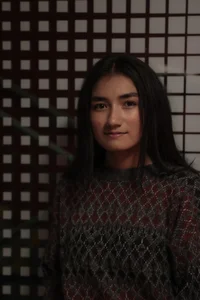
Content warning: this article contains mention of sexual assault.
As flashing lights break the darkness and ambulance sirens ring throughout the theatre, a pit begins to grow in my stomach. This is a story that I have seen play out far too many times in my life. I feel connected to the figure writhing on the ground — she could be my friend, a girl I knew in high school or a complete stranger that happens to be about my age.
Through the story of a young woman trying to receive medical help in the aftermath of sexual assault, writer and performer Katherine Matlashewski highlights the limitations in how healthcare institutions address patients with trauma.
Disclosure is a one-woman show, which is inspired by Matlashewski’s life. It was picked up by the Vancouver Fringe Festival, and is running at Granville Island’s NEST September 8–18. What started as a solo project through Langara’s Studio 58 program has evolved into a collaborative piece by a talented team of local artists, including UBC alumni Natasha Zacher (producer) and Jane Heyman (director).
Matlashewski was adamant that Disclosure must centre the non-linear process of healing.
In an interview with The Ubyssey, she said that her refusal to “put any form of assault or sexualized violence, or any soundscape of physical harm on stage,” was a means of setting personal boundaries, while also ensuring that “rather than circling around specific events, [she would] explore what happens next.”
She also said that their rehearsal schedule was deliberately extended to give the crew time for self-care and to mentally prepare themselves.
"There are days where when I was writing the show that I was having a challenging time and so I knew I needed to take the time and space away from the piece in order to best take care of myself," she said.
No matter how subtle, each of the character’s movements is a chilling display of vulnerability. She draws attention to her body to emphasize the sense of violation, as well as a hyper-awareness of sensations and appearances, that a person may feel after being assaulted. Her hands grip at her clothing or tremble at her sides. She reaches out to cup imaginary water, rinsing away grime; however, as she repeatedly splashes it over her face, it becomes clear that despite having washed away any physical signs of the incident, she may never feel truly clean.
Over and over, doctors and nurses force the character to tell them what happened, pressing for perfectly accurate recollections of the event each time. They treat the situation as if it is simply a series of procedures to follow, or a puzzle to solve. Matlashewski points out that it is far more difficult to process information while simultaneously being bombarded with questions, because “when her words are doubted, then she starts to doubt herself.”
She stumbles over descriptions of the perpetrator’s appearance and struggles to remember how she carried three keys in between her knuckles, a small flashlight and a whistle: a kit that anyone who grew up fearful of sexual violence — specifically femme-presenting individuals — knows all too well.
A 10-minute discussion period takes place after the show, in which a counsellor trained to support survivors of sexual assault appears on behalf of Women Against Violence Against Women (WAVAW) Rape Crisis Relief. Among its services are support groups, as well as accompaniment to appointments should the survivor choose not to involve friends or family. The counsellor said that they are nothing like the endless waitlists and broken crisis hotlines that the play critiques.
Alongside efforts to extend Disclosure for future festivals, Matlashewski sees possibilities to educate people through performance by working with UBC School of Nursing professor Sally Thorne.
Together, they are developing the piece into a training resource for nurses working with trauma patients, “as the current medical system is not set up to treat those who have experienced trauma, especially when the harm is not visible.”


